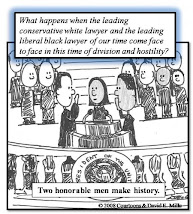
By JOHN SCHWARTZ
Published: December 31, 2009
My only comment is About Time !!!!- Norm
In a case that could set the first broad judicial standards for the use of
Tasers, a federal appeals court in California has ruled that the police can be held liable for using one of the devices against an unarmed person during a traffic stop.
The United States Court of Appeals for the Ninth Circuit, based in San Francisco, said the electrically disabling device constituted excessive force when used against an unarmed man who did not pose a threat, and it refused to allow a police officer immunity for its use.
In a
vividly worded opinion issued by the court this week, Judge Kim McLane Wardlaw described a “bad morning” for Carl Bryan, a 21-year-old Californian who drove over large stretches of Southern California to retrieve car keys mistakenly taken by a friend and ended up being Tasered by a Coronado, Calif., policeman and breaking four teeth when he fell to the ground.
Mr. Bryan was stopped twice on his driving odyssey, once for speeding and once for not wearing his seat belt. After the second stop, he was “agitated, standing outside his car, yelling gibberish and hitting his thighs, clad only in his boxer shorts and tennis shoes,” the court said.
The judge noted, however, that Mr. Bryan did not threaten the officer, Brian McPherson, and was not trying to flee — all elements of a
three-part test that the
United States Supreme Court has used to determine when significant force is justified. As for the third factor in the court’s test, the severity of the offense at issue, the Ninth Circuit judges observed that “traffic violations generally will not support the use of a significant level of force.”
The court found that the policeman’s use of force so exceeded the threat posed by Mr. Bryan that it denied his request for immunity for his actions and for a quick dismissal of the case against him. Instead, the judges will allow the case to go forward.
Eugene G. Iredale, a lawyer for Mr. Bryan, hailed what he called a “landmark decision.”
Orin S. Kerr, a former federal prosecutor and a professor at
George Washington University Law School, called it “an important case” that was unusual in the way it set a broad rule without giving deference to the use of force by the police.
Geoffrey P. Alpert, a professor of criminal justice at the
University of South Carolina who recently completed
a four-year study of Tasers for the Department of Justice, said that Tasers and other “conducted electrical devices” were used by more than 17,000 law enforcement agencies and that some departments had already upgraded their rules to allow their use only in the case of an “active or immediate threat.”
If the Ninth Circuit ruling is not overturned, Professor Alpert said, the Bryan case “is going to impact a lot of departments that have not changed their standards.”




















